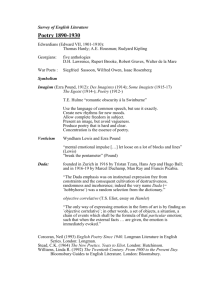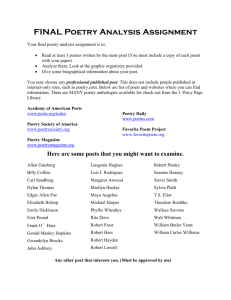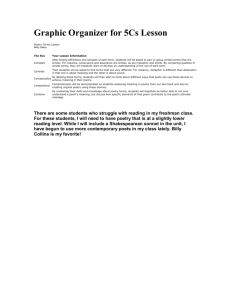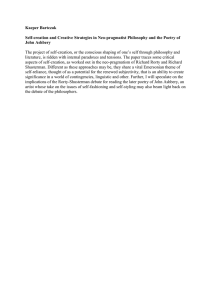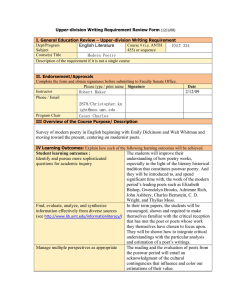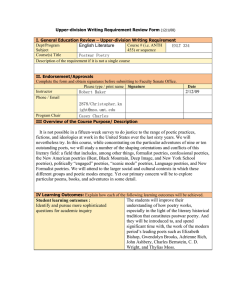Monash University Library 20 century poetry: Britain and America:
advertisement
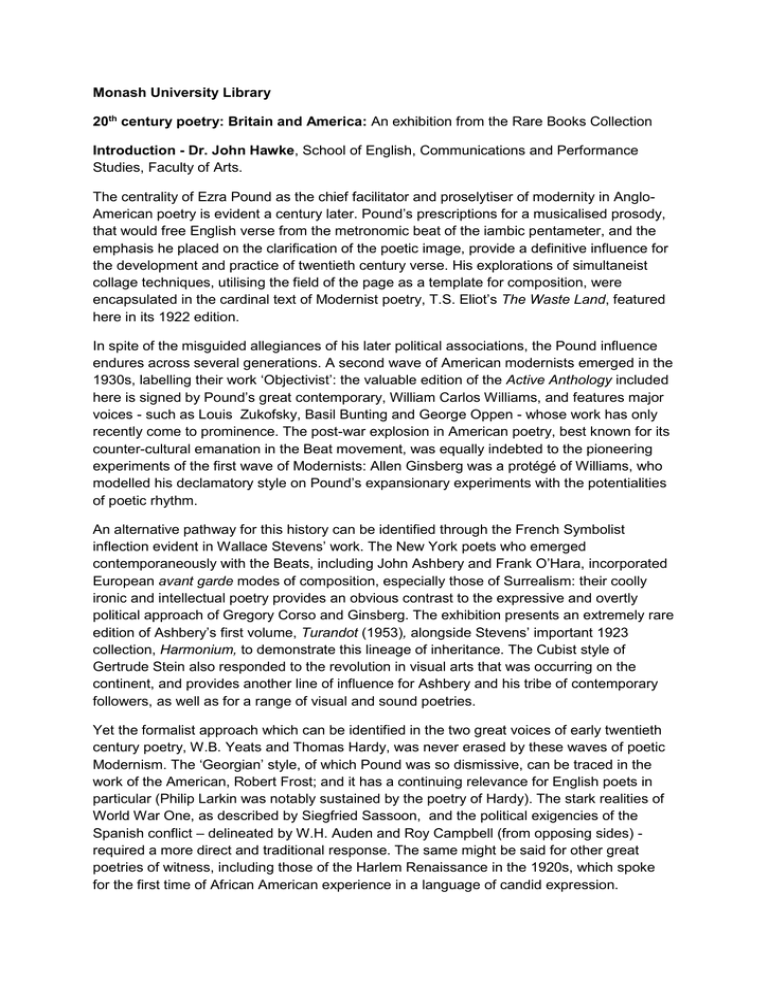
Monash University Library 20th century poetry: Britain and America: An exhibition from the Rare Books Collection Introduction - Dr. John Hawke, School of English, Communications and Performance Studies, Faculty of Arts. The centrality of Ezra Pound as the chief facilitator and proselytiser of modernity in AngloAmerican poetry is evident a century later. Pound’s prescriptions for a musicalised prosody, that would free English verse from the metronomic beat of the iambic pentameter, and the emphasis he placed on the clarification of the poetic image, provide a definitive influence for the development and practice of twentieth century verse. His explorations of simultaneist collage techniques, utilising the field of the page as a template for composition, were encapsulated in the cardinal text of Modernist poetry, T.S. Eliot’s The Waste Land, featured here in its 1922 edition. In spite of the misguided allegiances of his later political associations, the Pound influence endures across several generations. A second wave of American modernists emerged in the 1930s, labelling their work ‘Objectivist’: the valuable edition of the Active Anthology included here is signed by Pound’s great contemporary, William Carlos Williams, and features major voices - such as Louis Zukofsky, Basil Bunting and George Oppen - whose work has only recently come to prominence. The post-war explosion in American poetry, best known for its counter-cultural emanation in the Beat movement, was equally indebted to the pioneering experiments of the first wave of Modernists: Allen Ginsberg was a protégé of Williams, who modelled his declamatory style on Pound’s expansionary experiments with the potentialities of poetic rhythm. An alternative pathway for this history can be identified through the French Symbolist inflection evident in Wallace Stevens’ work. The New York poets who emerged contemporaneously with the Beats, including John Ashbery and Frank O’Hara, incorporated European avant garde modes of composition, especially those of Surrealism: their coolly ironic and intellectual poetry provides an obvious contrast to the expressive and overtly political approach of Gregory Corso and Ginsberg. The exhibition presents an extremely rare edition of Ashbery’s first volume, Turandot (1953), alongside Stevens’ important 1923 collection, Harmonium, to demonstrate this lineage of inheritance. The Cubist style of Gertrude Stein also responded to the revolution in visual arts that was occurring on the continent, and provides another line of influence for Ashbery and his tribe of contemporary followers, as well as for a range of visual and sound poetries. Yet the formalist approach which can be identified in the two great voices of early twentieth century poetry, W.B. Yeats and Thomas Hardy, was never erased by these waves of poetic Modernism. The ‘Georgian’ style, of which Pound was so dismissive, can be traced in the work of the American, Robert Frost; and it has a continuing relevance for English poets in particular (Philip Larkin was notably sustained by the poetry of Hardy). The stark realities of World War One, as described by Siegfried Sassoon, and the political exigencies of the Spanish conflict – delineated by W.H. Auden and Roy Campbell (from opposing sides) required a more direct and traditional response. The same might be said for other great poetries of witness, including those of the Harlem Renaissance in the 1920s, which spoke for the first time of African American experience in a language of candid expression. These contending currents which emerged in poetry at the beginning of the twentieth century, exemplified in the documents collected in this exhibition, therefore have a continuing significance for the manifold controversies of poets in the present day.


